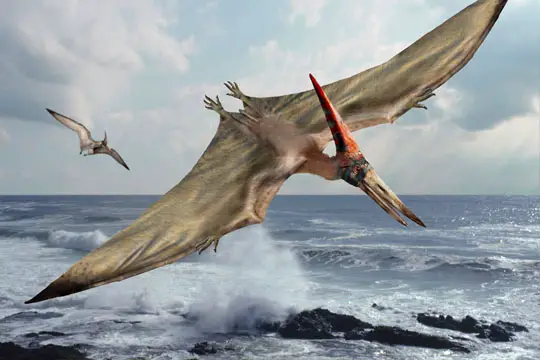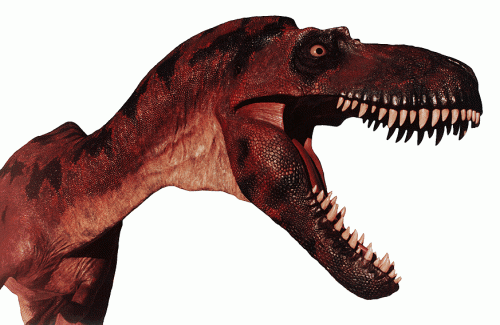Quetzalcoatlus
Quetzalcoatlus (named for the Aztec feathered serpent god Quetzalcoatl) was a pterodactyloid pterosaur known from the Late Cretaceous of North America (Campanian–Maastrichtian stages, 84–65 ma), and one of the largest known flying animals of all time. It was a member of the Azhdarchidae, a group of advanced toothless pterosaurs.Discovery and species
The first Quetzalcoatlus fossil was found by Douglas A. Lawson. During the Cretaceous, Texas’s climate was similar to modern tropical coastal wetlands and lagoons, extending along the Cretaceous Seaway that filled the center of North America. Bones of related animals are also known from Dinosaur Provincial Park, Alberta, Canada.
Skeletal remains of two species have been recovered from the Big Bend Region of Texas; the larger of the two (Q. northropi) had an estimated wingspan of up to 12 m (39 ft). There is still considerable debate as to the upper limit of Quetzalcoatlus wingspans. The largest remains, on display at the Science Museum of Minnesota, are somewhat scrappy, and may indicate an individual with a wingspan as large as 18 m (59 ft).
Such a wingspan, however, may violate fundamental structural limits imposed on biological fliers; some scientists favor a wingspan closer to 12 m (40 ft) in light of these arguments. The largest Pteranodon individuals with 6 m (20 ft) wingspans were once thought to represent the size limit in biological fliers before the discovery of Quetzalcoatlus, so the matter is clearly still open. More..
DIET
Quetzalcoatlus was a carnivore, probably skimming the water to find prey. It lived inland from the sea, near fresh-water ponds (so its diet was not primarily sea fishes and marine mollusks like other pterosaurs). It probably ate arthropods (like early crayfish) and dying animals. It probably hunted its prey by gliding toward the water and swooping up its meals. It filtered its food through its long, pointed, toothless jaws. Quetzalcoatlus must have had good eyesight in order to spot meals from the air.
LOCOMOTION
Quetzalcoatlus flew long distances using large, light-weight wings.
DISCOVERY OF FOSSILS
The first Quetzalcoatlus fossil was found in Big Bend National Park, Texas, USA, by Douglas A. Lawson (who was then a geology graduate student at the University of Texas, Austin) in 1971. Lawson named Quetzalcoatlus 1975. Other smaller specimens have been found.
CLASSIFICATION
Quetzalcoatlus was a Pterosaur. Pterosaurs were reptiles, but not dinosaurs. By definition, all dinosaurs were diapsid reptiles with an upright stance. Pterosaurs probably had a semi-upright stance. There is a small minority of paleontologists who think that the pterosaurs’ stance could have been upright and that pterosaurs should therefore be included in the clade of dinosaurs (being derived theropods). Either way, dinosaurs and pterosaurs are certainly closely related. More..



I really like Pterosaurs! Haven’t some palaeontologists found this huge Pterosaur called Hatzegopteryx? Please Email me when you got something on prehistoric animals
According to this site, the Hatzegopteryx was smaller than the quetzlacoatlus, but the used the Humourous of the two to compare the relative size. Here is the site http://www.dinosaurfact.net/Pterosaurs/Hatzegopteryx.php